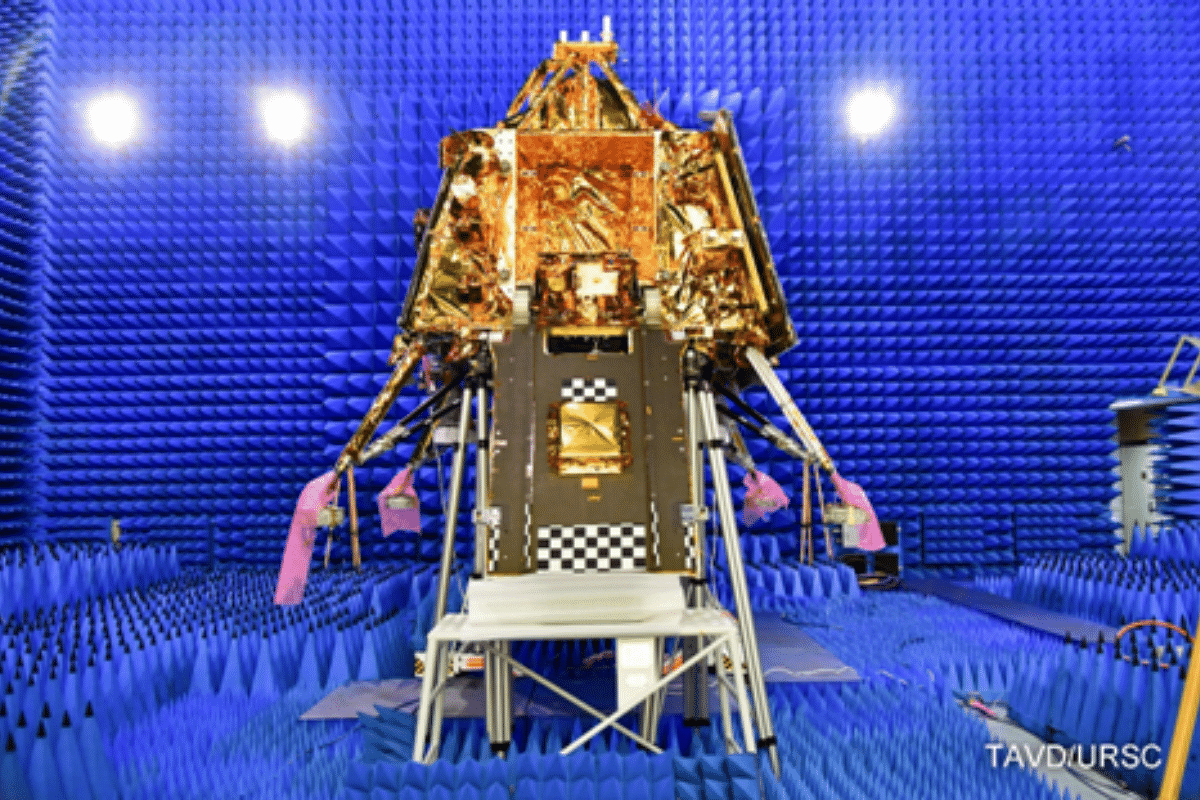Science
Chandrayaan-3: As ISRO Puts Rover Pragyan To 'Sleep', Here's What It Said About The Mission's Performance

The Chandrayaan-3 lander. (Photo: ISRO).
The Chandrayaan-3 lander and rover have been put into sleep mode on the moon, marking the successful completion of the mission's objectives.
Scientists have expressed their satisfaction, stating that the mission not only met expectations but also exceeded them.
ISRO has now announced that the Pragyan rover, which had covered a distance of over 100 metres on the moon since its landing on 23 August, has been put into sleep mode.
This occurred approximately three hours after the rover emerged from the Vikram lander at 6.03 pm IST.
P Veeramuthuvel, the project director for the Chandrayaan-3 mission, expressed satisfaction with the scientific objectives being completely met.
Veeramuthuvel said that Vikram will be instructed to enter sleep mode on Sunday.
However, he also explained that the mission's lifespan of 14 earth days cannot be fully utilised due to certain limitations.
He said, “We landed on the second day (of sunlight on the moon). There are 14 days of sunlight but we cannot fully utilise these 14 days because we had to have a sun elevation angle of six degrees. So, we cannot go till the 14th day and we will be planning to issue the sleep command sometime tomorrow (Sunday).”
Throughout the 14 days of sunlight on the moon, the optimal sun elevation angle of six degrees is not consistently attainable. The sun elevation is lower than six degrees at the beginning and end of the lunar day.
He further added “Sleep has to be commanded. Our mission life as per the plan is one lunar day which is equivalent to 14 earth days. Our entire design is for that. We have built in a very innovative feature of sleep and wake up and if it survives in the lunar night where temperatures go down to a very low level of upto minus 150 degrees Celsius, there is no guarantee that systems will work but we are having hope. That is all.”
ISRO announced on its social media platforms that the solar panel is positioned to receive light at the next sunrise, expected on 22 September 2023.
The project director also shared that the Chandrayaan-3 mission encountered numerous challenges throughout its preparation, landing, and experimentation phases. Despite these obstacles, the mission persevered and achieved its objectives.
Veeramuthuvel said, “I cannot name one or two because there were many, many challenges. Starting from the time of preparing for the project we had to conduct ground tests by recreating the moon environment. This was a challenge as we had to prove working in the moon environment. We needed to have the right test configuration, the number of tests and the results had to be right. The tests have to be subjected to review.”
He continued, “Landing was a very, very big challenge. After the launch every stage was a challenge – raising the orbit, leaving the earth’s orbit, acquiring the moon’s orbit and then lowering to a circular orbit and finally deboosting, separating of orbiter from the lander and finally coming to the elliptical 100×30 orbit and again descending from there for the final 30 km.”
He further added, “The last 19 minutes were the biggest challenge because it was a fully autonomous landing sequence.”
The dedicated efforts of ISRO scientists behind the success of the Chandrayaan mission have been described as a remarkable feat. The project demanded meticulous planning and tireless work, with scientists comparing it to a living entity that required constant attention. The toil and dedication of these scientists are evident in the mission's achievements.
After the successful moon landing, there were new challenges to overcome, such as the deployment of various elements. This required careful planning and execution.
The rover, a crucial component of the mission, had to be able to navigate the lunar surface autonomously. It had to collect data and transmit it to the ground through the lander, as direct communication with Earth was not possible. This required precise coordination and careful manoeuvring.
As the rover explored the moon, it had to navigate around obstacles and adhere to certain movement limitations. Additionally, there were numerous payload data to be operated, adding to the complexity of the mission.
Since the successful landing of the Lander Module on 23 August, each stage of ISRO's first moon landing mission has proceeded according to plan. The team's meticulous planning and execution have ensured a picture-perfect mission so far.
The space agency announced on 26 August that the mission objectives of demonstrating a safe and soft landing on the lunar surface and rover roving on the moon have been accomplished.
In addition, the agency stated that the in-situ scientific experiments are currently underway and all payloads are functioning normally.
Support Swarajya's 50 Ground Reports Project & Sponsor A Story
Every general election Swarajya does a 50 ground reports project.
Aimed only at serious readers and those who appreciate the nuances of political undercurrents, the project provides a sense of India's electoral landscape. As you know, these reports are produced after considerable investment of travel, time and effort on the ground.
This time too we've kicked off the project in style and have covered over 30 constituencies already. If you're someone who appreciates such work and have enjoyed our coverage please consider sponsoring a ground report for just Rs 2999 to Rs 19,999 - it goes a long way in helping us produce more quality reportage.
You can also back this project by becoming a subscriber for as little as Rs 999 - so do click on this links and choose a plan that suits you and back us.
Click below to contribute.
Latest